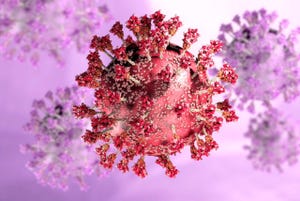New Glue May Soon Replace Sutures – Even in a Beating Heart
January 10, 2014
A new surgical adhesive is strong and flexible enough, and biocompatible enough, to be used to help patch heart defects, doing away with the need for sutures or stables. Developed by researchers at the Boston Children's Hospital and Brigham and Women's Hospital, the adhesive has already been tested in mice and pigs. It is being commercialized by Paris-based startup Gecko Biomedical, which counts some of the same researchers as its founders. The company says it has $11 million in funding, which it plans to use to bring the surgical adhesive to patients in Europe in one to two years.
|
Gecko Biomedical's glue can even be used on a beating heart. Image from Gecko Biomedical. |
The development of the hydrophobic light-activated adhesive (HLAA) was described in a paper published online in Science Translational Medicine. In the abstract, the authors say that their new adhesive "achieves a strong level of adhesion to wet tissue and is not compromised by pre-exposure to blood. The HLAA provided an on-demand hemostatic seal, within seconds of light application, when applied to high-pressure large blood vessels and cardiac wall defects in pigs." They go on to say that "the HLAA could be used for many cardiovascular and surgical applications, with immediate application in repair of vascular defects and surgical hemostasis."
Jeffrey Karp, PhD, of the department of medicine at the Brigham and Women's Hospital, a co-founder of Gecko Biomedical, and co-senior author of the study, says: "The tissue adhesive that we developed satisfies a long list of design criteria including biodegradation, biocompatibility, ability to strongly adhere on-demand to tissue with a water-tight seal in the presence of flowing blood, and elastic properties to accommodate cyclical forces such as those exerted by a beating heart or blood vessel. It offers the potential to reduce the invasiveness of surgical procedures, reduce operative times, and improve outcomes for patients."
A group led by Pedro J. del Nido, MD, Chief of Cardiac Surgery, Boston Children's Hospital, conducted the animal testing. They used the HLAA to repair heart-wall defects in mice, and to attach patches to pigs' hearts. These patches were intended as surrogates for medical devices that might be attached to the heart. The researchers also used the glue to repair arteries.
According to a Gecko Biomedical press release, the glue is based on the combination of safe, naturally occurring compounds and has tunable adhesive and mechanical properties. It is soft and elastic when applied to the wet surfaces of the wounds. Upon exposure to UV light the glue forms a strong and leak-proof, but flexible, seal. The adhesive can be engineered with mechanical characteristics similar to arteries and the digestive system, and the composition of the glue can be adjusted for strength or rate of biodegradation to suit the wound being repaired.
About the Author(s)
You May Also Like



